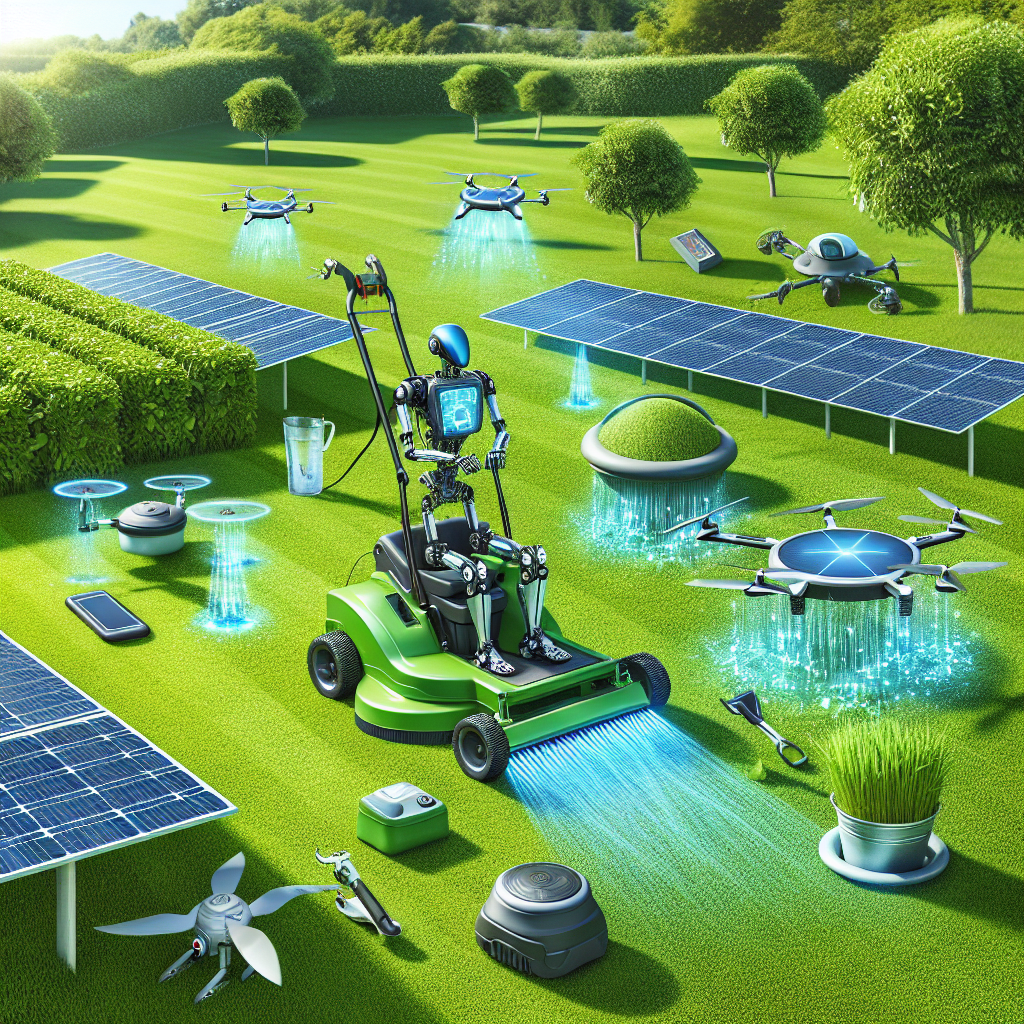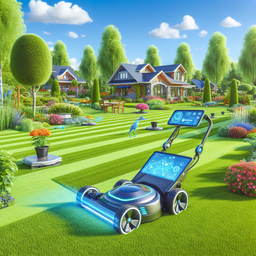Overview of Greener Grass Lawn Care
Maintaining a lush, green lawn requires more than just regular mowing. Achieving the perfect turf involves a holistic approach that addresses soil health, watering techniques, mowing practices, fertilization strategies, weed control, and pest management. By understanding and implementing the fundamentals of lawn care, homeowners can transform their yards into vibrant outdoor spaces that enhance the beauty of their homes.
Understanding Soil Health
Proper soil health is the foundation of a healthy lawn. Conducting soil tests to assess nutrient levels, pH balance, and organic matter content is essential for developing a tailored lawn care plan.
According to Dr. Nick Christians, Professor Emeritus of Horticulture at Iowa State University, "Soil testing is crucial in understanding the specific needs of your lawn. By adjusting nutrient levels and pH balance, you can create an optimal growing environment for grass to thrive."
Importance of Soil Testing
Soil testing helps identify deficiencies or excesses of nutrients, enabling homeowners to make informed decisions about fertilization and soil amendment practices.
Nutrient Management
Balancing essential nutrients such as nitrogen, phosphorus, and potassium is key to promoting healthy grass growth and root development.
pH Balancing
Maintaining the correct soil pH level (usually between 6.0 and 7.0) ensures that grass can efficiently absorb nutrients from the soil.
Proper Watering Techniques
Water is vital for the health of a lawn, but proper watering techniques are crucial to prevent issues like overwatering or drought stress.
"Effective irrigation is not just about providing water; it's about delivering the right amount at the right time," says Dr. Doug Soldat, Extension Turfgrass Specialist at the University of Wisconsin-Madison.
Irrigation Best Practices
Installing an efficient irrigation system and adjusting watering schedules based on season and weather conditions can help conserve water and promote deep root growth.
Watering Schedule
Establishing a consistent watering schedule, typically early in the morning, reduces water loss through evaporation and minimizes the risk of fungal diseases.
Monitoring Soil Moisture
Regularly checking soil moisture levels and adjusting watering frequency based on grass needs and environmental factors is essential for maintaining a healthy lawn.
Mowing and Lawn Maintenance
Proper mowing practices contribute significantly to the overall health and appearance of a lawn. Setting the correct mowing height, managing grass clippings, and aerating the lawn are key maintenance tasks.
"Maintaining the ideal mowing height for your grass type is crucial to encourage deep root growth and shade out weeds," explains Dr. Frank Rossi, Associate Professor in the Department of Horticulture at Cornell University.
Ideal Mowing Height
Each grass species has an optimal mowing height that promotes strong roots and prevents stress. Cutting grass too short can weaken the plant and make it more susceptible to pests and diseases.
Grass Clippings Management
Leaving grass clippings on the lawn after mowing (grasscycling) can provide natural nutrients to the soil and help retain moisture.
Lawn Aeration
Aerating the soil reduces compaction, improves air and water infiltration, and enhances root growth, ultimately leading to a healthier lawn.
Fertilization Strategies
Fertilizers are essential for providing additional nutrients to the soil and ensuring vigorous grass growth. Understanding the types of fertilizers, application timing, and environmental considerations is key to effective fertilization.
"Choosing the right fertilizer and applying it at the correct time are critical for maximizing nutrient uptake and minimizing environmental impact," says Dr. Emily Merewitz, Assistant Professor of Turfgrass Science at Michigan State University.
Types of Fertilizers
Different fertilizers contain varying ratios of nitrogen, phosphorus, and potassium, and selecting the appropriate type based on soil test results and grass needs is essential.
Application Timing
Fertilizing during periods of active growth and avoiding excessive applications can prevent nutrient leaching and runoff.
Environmental Considerations
Using slow-release fertilizers and following recommended application rates help protect water quality and reduce the risk of nutrient pollution.
Weed Control Methods
Weeds compete with grass for nutrients, water, and sunlight, making weed control an essential aspect of lawn care. Employing pre-emergent and post-emergent herbicides, integrated pest management strategies, and proactive weed prevention techniques can help maintain a weed-free lawn.
"Preventing weeds before they emerge is often more effective and less harmful to the environment than trying to eliminate established weeds," notes Dr. Aaron Patton, Professor of Horticulture at Purdue University.
Pre-emergent vs. Post-emergent Herbicides
Pre-emergent herbicides target weed seeds before they germinate, while post-emergent herbicides are used to control existing weeds. Combining both strategies can provide comprehensive weed control.
Integrated Pest Management
Integrated pest management involves monitoring pest levels, using cultural practices to reduce weed pressure, and only resorting to chemical control when necessary.
Weed Prevention
Promoting a dense and healthy lawn through proper watering, mowing, and fertilization practices can help prevent weeds from taking hold and spreading.
Pest Management
Lawn pests such as grubs, insects, and disease-causing organisms can damage grass if left unchecked. Identifying common pests, fostering beneficial insects, and implementing natural pest control methods are essential for effective pest management.
"Maintaining a balanced ecosystem in your lawn can help naturally control pest populations and reduce the need for chemical interventions," advises Dr. Mary Meyer, Professor and Extension Horticulturist at the University of Minnesota.
Common Lawn Pests
Grubs, chinch bugs, and armyworms are among the common insect pests that can cause damage to grass roots and foliage.
Beneficial Insects
Encouraging beneficial insects like ladybugs and ground beetles that prey on harmful pests can help control insect populations in the lawn.
Natural Pest Control Methods
Using biological controls, organic insecticides, and cultural practices like overseeding can effectively manage pests while minimizing harm to the environment.
Case Studies
Real-world examples of successful lawn care transformations and expert tips from professionals provide valuable insights into implementing best practices for greener grass.
Successful Lawn Care Transformations
Case studies illustrating the transformation of unhealthy lawns into lush, thriving landscapes through targeted care and sustainable practices.
Expert Tips and Tricks
Advice from experienced lawn care professionals on optimizing watering schedules, selecting the right fertilizers, and combating common lawn issues.
Real-world Experiences
Homeowner testimonials and before-and-after photos showcasing the results of adopting proper lawn care techniques and overcoming challenges.
Implications and Conclusion
Adopting sustainable lawn care practices not only promotes a healthier environment but also enhances the aesthetic appeal and value of residential properties. By prioritizing soil health, proper watering, maintenance routines, and eco-friendly pest control methods, homeowners can enjoy the benefits of a vibrant and resilient lawn.
Call to Action
Seeking advice from lawn care professionals, attending gardening workshops, and exploring research opportunities can further deepen your knowledge and skills in sustainable lawn management. By joining local gardening communities and staying informed about the latest trends in lawn care, you can take your greener grass ambitions to the next level.
Topics




